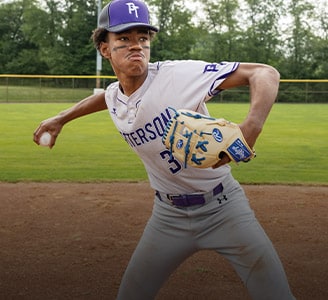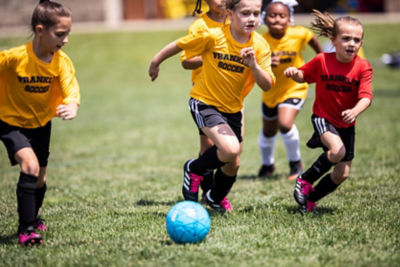My Account
Sign In to Earn PointsHow to Choose Soccer Shin Guards
Every player on the soccer field needs to wear shin guards. Learn what to look for before buying your next pair.
Shin guards are likely the most important piece of equipment a soccer player will buy. Why? Because EVERYONE on the field — no matter the level of play — must wear them. How can you make sure you get the right fit?
First, let’s look at the three main types of shin guards.
SLIP-IN SHIN GUARDS
Slip-in shin guards are lightweight shields that can be worn right under your socks. Some socks are snug enough to keep the shin guards from moving, but many players prefer to use tape, stays or compression sleeves to keep the shields in place throughout the game. More advanced players typically prefer slip-in shin guards for the freedom of movement they offer.
ANKLE SHIN GUARDS
Because of the additional protection they provide, ankle shin guards are typically recommended for youth and intermediate players. This style offers additional padding on both sides of the ankle to shield it from kicks. Most ankle shin guards feature stirrups that slide under the feet, along with a hook-and-loop strap or elastic band that wraps around the calf to ensure a secure fit. Some brands offer styles with removable ankle guards, allowing players to wear only the shin shield as they get older and progress.
SHIN SOCKS
As the name implies, shin socks are built into the socks for convenience. Because of the hassle-free design, shin socks are a popular choice for youth players.
Keep in mind: Shin guards worn at the high school level must be approved by the National Operating Committee on Standards for Athletic Equipment (NOCSAE). Look for the NOCSAE stamp on the front of the shin guard.
CONSIDER YOUR POSITION
If you primarily play one position, you’ll want to look for specific features in your shin guards to enhance your game.
- Defenders: Defenders can take a lot of punishment, so they should look for a heavier shin guard with ample protection, perhaps including ankle coverage.
- Midfielders: If you’re a midfielder, you’ll need a balance of protection and flexibility that won’t restrict your movement.
- Forwards: Forwards need shin guards that allow for explosive bursts of speed and quick changes in direction as they elude defenders on their way to the net. Forwards will want to find the lightest, smallest shin guards available for optimum mobility.
- Goalkeepers: Goalkeepers require the least protection of all positions. Look for a lightweight option with minimal padding.
SHIN GUARD SIZING
Finally, you need to make sure your shin guards fit properly. Shin guard sizing is determined by the height of the player. When choosing a pair of shin guards from DICKS.com, you will see sizing guidelines in the product description. Make sure to read the size chart carefully to ensure a great fit.
You’ll want your shin guards to cover most of the area between your ankle and knee. Shin guards should fit snugly and be at least 2" below the knee.
SHIN GUARD ACCESSORIES
There are a few shin guard accessories you may want to consider in order to have the best possible experience on the pitch.
- Shin Guard Sleeves: As mentioned earlier, if you wear slip-in shin guards, you may want to wear shin guard sleeves to ensure a snug fit. The last thing you want is your shin guards sliding down your leg when the game is on the line.
- Shin Guard Tape: Typically, players who use shin guard tape will wrap it over their socks at both the top and bottom of the shin guard to hold it in place. The one clear advantage of shin guard tape is that it allows the player to decide how firm of a hold they want on the shin guard.
- Shin Guard Stays: If you find tape to be a hassle or simply uncomfortable, shin guard stays are a great alternative. Most shin guard stays wrap around your leg with a hook-and-loop closure to hold your shin guards in place.
- Ankle Guards: If you opt for a pair of shin guards that does not come with ankle guards, you can always add them later if you decide you need them. They are sold separately, typically with the same stirrup design found in ankle shin guards.








